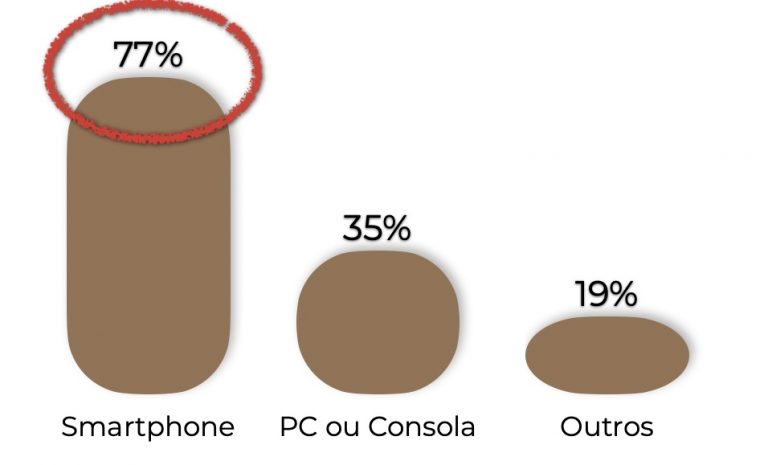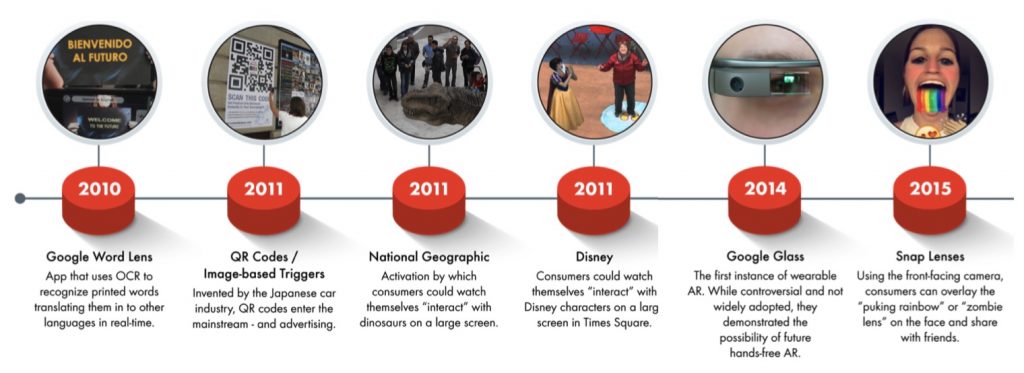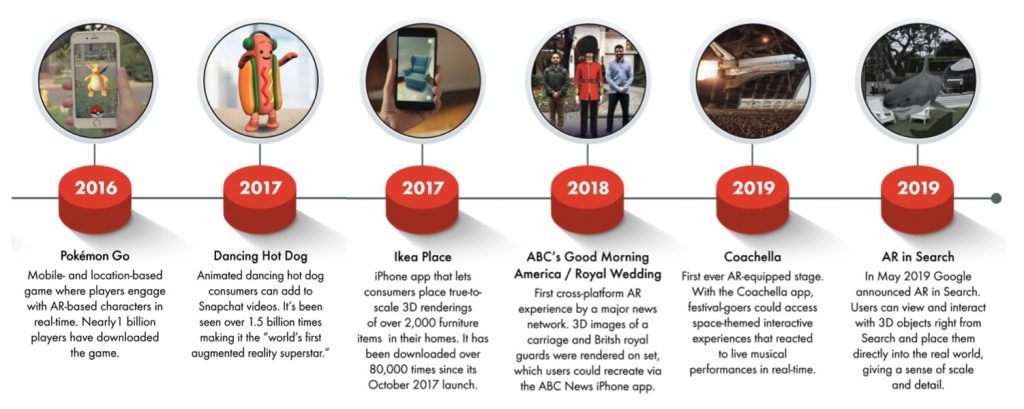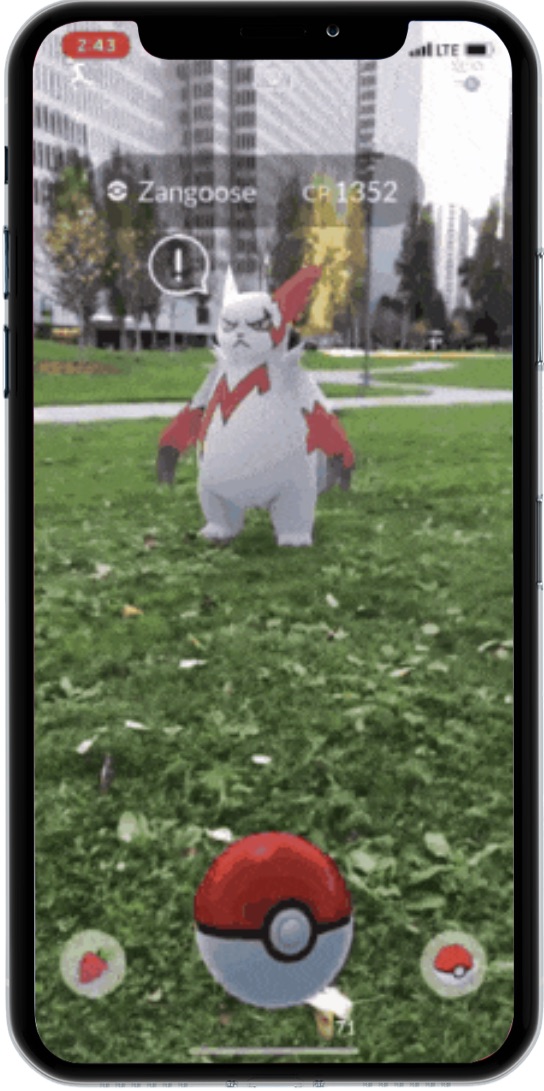Menu


Managing Partner YouX

Augmented Reality is an experience that uses a camera to change or improve the way the user sees the real world. Through a native or web app, virtual elements are superimposed (such as images, videos, sound, documents, 3D elements) to which attributes such as geolocation can be attributed to the real context where the user is.
Augmented, Mixed and Virtual Realities are identified as the emerging technologies that will grow the most in the coming years.

Access to Augmented Reality (generally abbreviated as AR, which results from the English name Augment Reality) is mainly done through smartphones, tablets, proprietary applications or Snapchat.




POKÉMON GO was the main driver of this process, as shown by some of the numbers it achieved:
Pokémon GO is an augmented reality game released in July 2016 for IOS and Android. This game used the GPS and camera of smartphones to allow players to interact with virtual creatures – the Pokémon – that appeared on the devices as if they were in the real world.


The SDKs
(software development platforms) of the main technology companies have massively adopted this technology.

Some data;
Curious about Augmented Reality?
Download our AR You-X and test our sample markers .
YouX is a software development company focused on providing the best user experiences.
Sede: Av. da Peregrinação, 9, 1 dto – 1990-425 Lisboa
Info@you-x.eu – Telefone: +351 211 353 284
Digital Strategy
UX Design
UI Design
Digital Sprints
User Research
AR applications
WebAR
UX Audits
Software development
Mobile Applications
Web Apps
© 2021-25 Xperialab Lda ® Todos os direitos reservados.
YouX is a software development company focused on providing the best user experiences.
Digital Strategy
UX Design
UI Design
Digital Sprints
User Research
AR applications
Web AR
Software development
Mobile Applications / Web Apps
Websites
© 2021/5 Xperialab Lda ®
Todos os direitos reservados.
You cannot copy content of this page